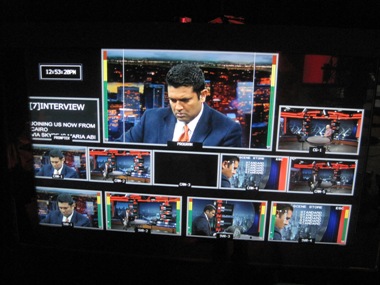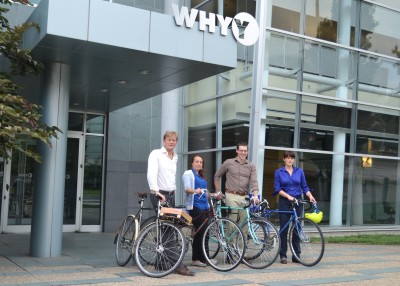Tag: Journalism
WBUR, KWSU among grantees in Knight’s community news challenge
WBUR in Boston, Northwest Public Radio in Pullman, Wash., and The Lens, a nonprofit newsroom in New Orleans, are among 10 recipients ...NewsHour Weekend adapts PBS flagship for new timeslot, lean production model
PBS backed the startup of NewsHour Weekend as the core element of a revamped approach to its weekend public affairs programs. It ...PRX teams with Center for Investigative Reporting on Reveal series
Public Radio Exchange is adding a new weekly show to its development slate — Reveal, a joint production with the Center for Investigative ...OPB courts partners for statewide news network
Oregon Public Broadcasting has a track record of launching effective news collaborations. Its newest project to create a statewide news network is ...New twist on the news cycle: chasing stories on two wheels
Several public broadcasting journalists now count a bike helmet among their essential reporting equipment as they pedal to cover news events and ...Ombud’s critique of NPR series prompts rebuke from top brass
“My finding is that the series was deeply flawed and should not have been aired as it was,” the ombudsman wrote. Top ...ESPN backs away from NFL reporting project with Frontline
Cable network ESPN on Aug. 22 withdrew from its reporting collaboration with Frontline on an investigative documentary project examining the NFL’s allegedly lax ...NewsHour promotes Ifill and Woodruff to helm show, as TV’s first female co-anchor team
The PBS NewsHour is reassigning its senior journalists to new roles by tapping Gwen Ifill and Judy Woodruff as co-anchors and managing editors of ...Grant to Frontline will create its first desk, to oversee news collaborations
Frontline is spending $1.5 million to bolster its ability to manage its news collaborations, which are growing in number as well as importance. ...KQED Newsroom to relaunch Oct. 18
Northern California’s KQED-TV is revamping its Friday evening public affairs show by reviving a title from its distant past.Rocky Mountain PBS merger with I-News aims to serve ‘audience of the future’
American University's J-Lab analyzes the nation’s first formal merger of a public broadcasting network with a nonprofit news startup.Online News Association moves into new NPR building
The Online News Association, a nonprofit resource and support group for digital journalists, moved its offices into NPR’s new Washington, D.C., headquarters ...Preparing public media newsrooms to cover local crises
Crisis coverage will stress several layers of a public station's operating systems — from newsroom layout to editorial decision-making; from the flexibility ...Ombud answers watchdog’s concerns about public radio’s America Abroad
The ombudsman for America Abroad, a monthly public radio show covering foreign policy and international affairs, has responded to criticism from the media watchdog ...WBUR microsite explores Mass. drug lab crisis
In late May, WBUR published “Bad Chemistry: Annie Dookhan and the Massachusetts Drug Lab Crisis,” an online report on a former state ...






